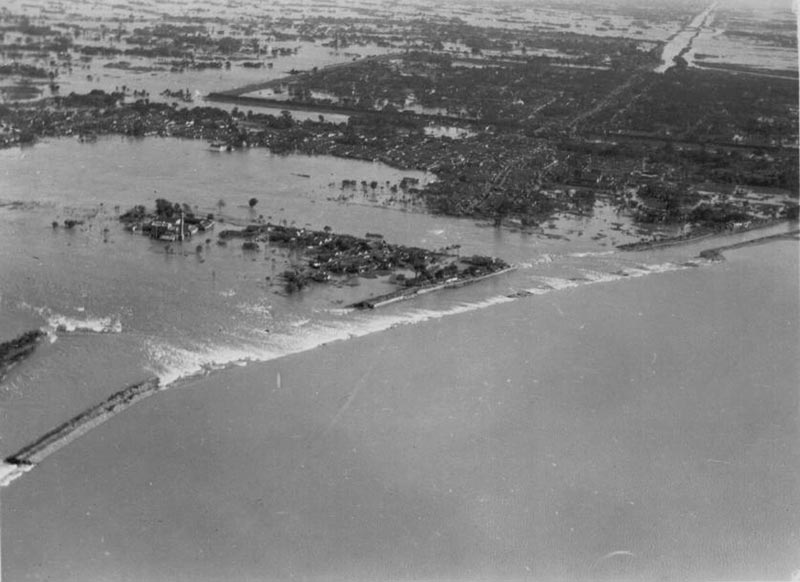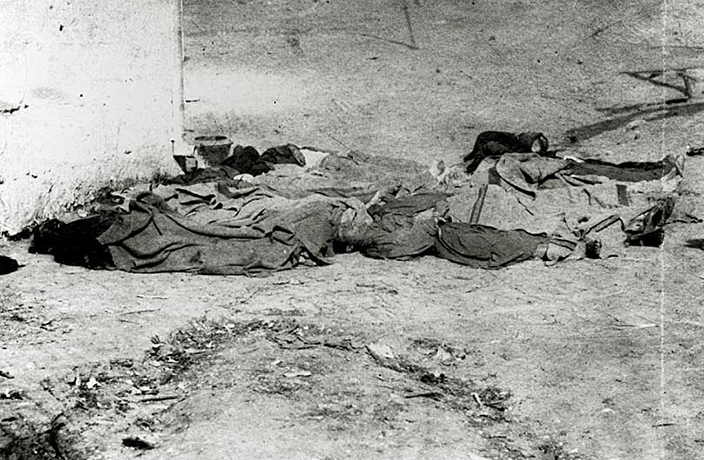On the evening of August 25, 1931, the water through the Grand Canal washed away dikes near Gaoyou Lake, Anhui Province, drowning some 200,000 people in their sleep. It was just one chapter of the Central China floods of 1931, generally considered the deadliest natural disaster ever recorded.
From 1928 to 1930 central China had suffered a long drought. Heavy snow storms in the winter of 1930/31 were followed by heavy rains during the spring thaw, which only increased into the summer months.
On average two cyclones occur per year in the region; nine hit in July alone.
 Photo by Charles Lindbergh. He and his wife Anne played a pivotal role in the 1931 China Flood, performing aerial surveys of the Northern Jiangsu flood area.
Photo by Charles Lindbergh. He and his wife Anne played a pivotal role in the 1931 China Flood, performing aerial surveys of the Northern Jiangsu flood area.
The high watermark was reached on August 19 at Hankou, one of the three cities whose merging formed modern-day Wuhan, when levels were some 16 meters above normal (that’s higher than the buildings on the Shanghai Bund).
When the flood reached the then capital Nanjing, it became an island in a massive flood zone.
Countless people died of drowning or from waterborne diseases such as cholera and typhus, while there were widespread reports of wives and daughters being sold, infanticide and cannibalism.
The death toll is estimated at between 3.7 and 4 million people, with a further 30 million affected.
READ MORE: Explainer: Why China Experiences Reoccurring Floods
For more This Day in History stories, click here.



















0 User Comments